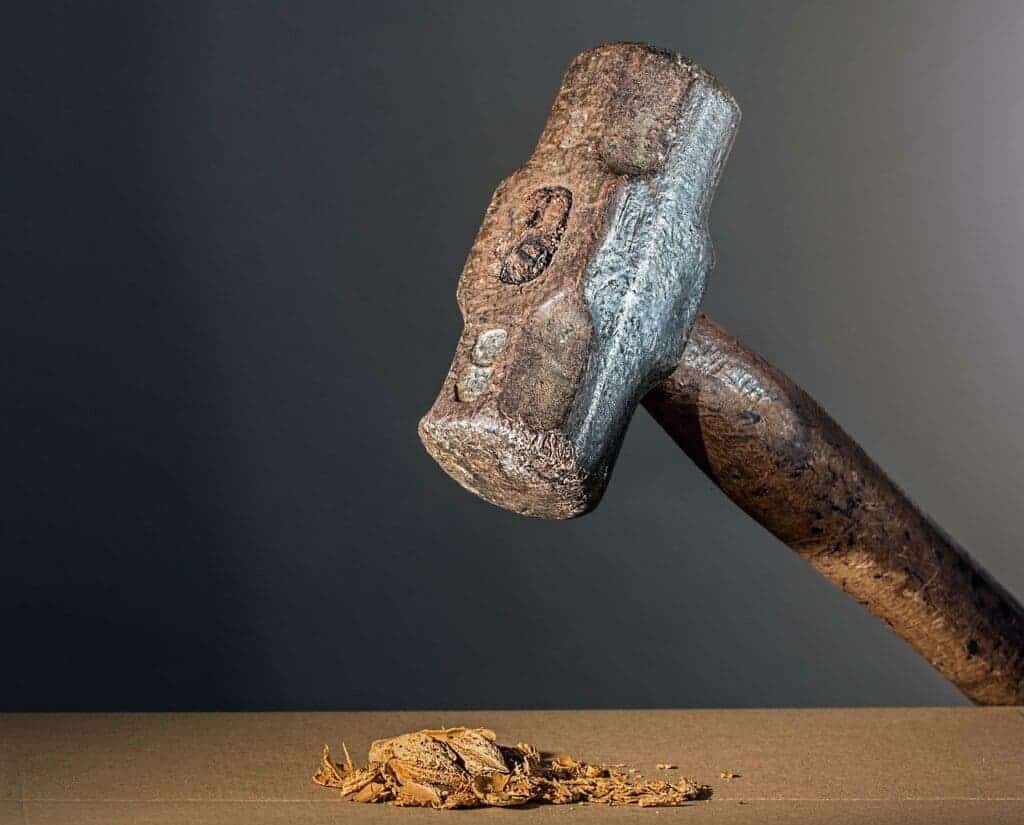New research is looking into the benefits that adding handles to tools produced for early humans.

When asked to name the most important advancement in human history, many people would say fire or the wheel; after all, these set the groundwork for all our future progress. A new paper comes to show that the simple addition of handles to the first tools — a process known as ‘hafting’ — may have been just as instrumental a change. According to the findings, although hafted tools require more energy to use than unhandled tools, they result in lower overall energy expenditure compared to the work they can produce.
The conclusion of the paper is that the advent of hafting allowed early humans a much greater ability to change the environment to their needs, thus jump-starting civilization as we know it.
You hafta try it!
“Since its appearance between 500.000 and 250.000 years ago, the invention of hafted (composite) tool technology represents a key technological transition that has shaped human social, cognitive, and biological capabilities. This new additive technology, with tools made of multiple parts combined into a working whole, has generated considerable interest in its cognitive implications, including the development of language and extended planning,” the authors report.
The creation of a hafted tool is more complex and requires more complex cognitive processes than unhafted tools. The current paper started from the assumption that the development and subsequent spread of hafted tools stand as testament to the fact that the benefit they brought to societies was greater than the effort and planning required to build and use them. From there, the researchers set out to determine what these benefits are, and their magnitude.
So they enlisted the aid of 24 male and 16 female adult volunteers to conduct a series of experiments to find out. These consisted of the volunteers conducting activities that would have been practiced by early humans. The volunteers would use both hafted and unhafted tools during these activities, while wearing suits carrying a suite of sensors. During the experiment, the suits would monitor the participant’s motions, muscle contraction levels, their oxygen consumption, and the speed that the tools were moving at.
As the advent of hafted tools coincided with a period of great development of the industry, agriculture, and transport capabilities of their time, the tasks that the volunteers performed reflected needs associated with these fields of work. These included chopping down a simulated tree using axes (with and without handles) or scraping away fibers on a carpet that simulated animal hide using scrapers.
Data from these tests reveal that hafted tools allowed the participants a greater range of motion and impact speed with their tools, while requiring more use of their muscles. This increased demand however, resulted in a much more efficient use of energy — in essence, they require more effort to use but produce much better output per unit of energy expended.
The authors explain that the advantages seen here in regards to the use of hafted tools was almost certainly a key part of why they were invented and readily adopted throughout early societies. The advantages they brought to the table also set the groundwork for civilization as we know it to emerge. Such tools, for example, made it easier for people to cut down trees — in turn, allowing them to build more complex, wooden structures. Their use made it easier to clear land for farming or to fashion other tools, such as spears for hunting, giving early groups easier access to more abundant food.
“Of the advantages hafting is proposed to have conferred over non-hafted tools (killing power, raw material efficiency, and reduced contact with biological hazards), the underlying advantage lies in the greater leverage offered by placing working edges in a handle or shaft compared with hand-held tools that typified the Lower Palaeolithic,” the paper explains. “A hafted tool is generally assumed to increase the energetic efficiency, force and precision that can be applied to a task. These largely untested assumptions have been consolidated into the ‘efficiency hypothesis’ of hafted tool technology.”
“This study has shown that […] hafting results in significantly different biomechanical strategies, that ultimately work to offer an energetic benefit compared with hand-held equivalent tools. Most notably, during the chopping task […] the energetic benefit is achieved through increases in joint motions and muscle […] that ultimately made the hafted tool used more effective per unit of energy applied to a task.”
While the findings may seem pretty self-obvious (anyone who’s ever tried to hammer a nail using a stone can tell you hafting makes tools better) it is still important to investigate our assumptions in a rigorous, scientific setting. The study showcases how a simple change in our tools which most of us would overlook or take for granted gave our ancestors the leverage — quite literally — needed to build civilization into what it is today. The study is also a great example of experimental archeology, a field of research that aims to understand our ancestors by mimicking their actions, behavior, or lifestyle, and one which is very dear to me.
The paper “A biomechanical investigation of the efficiency hypothesis of hafted tool technology” has been published in the Journal of The Royal Society Interface.



